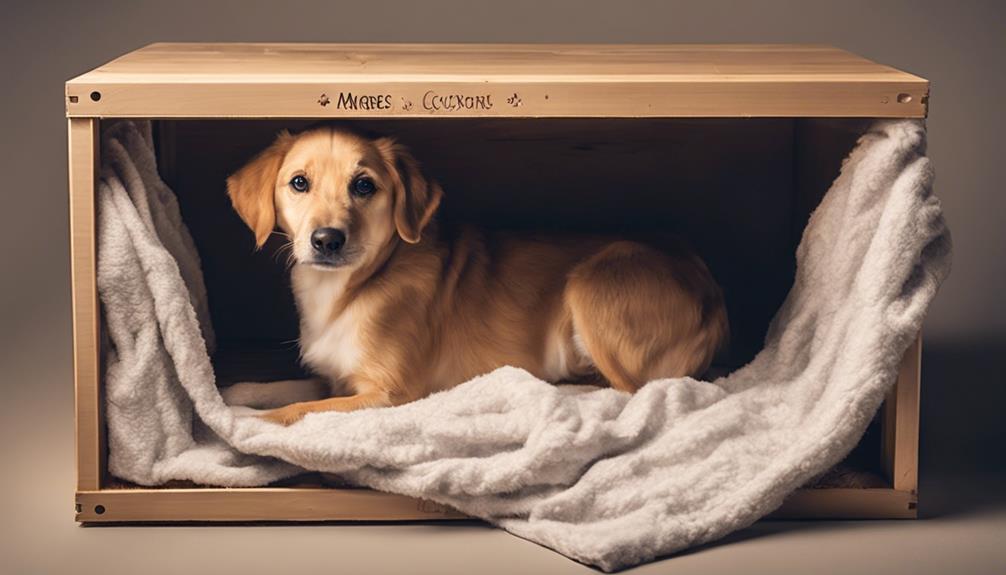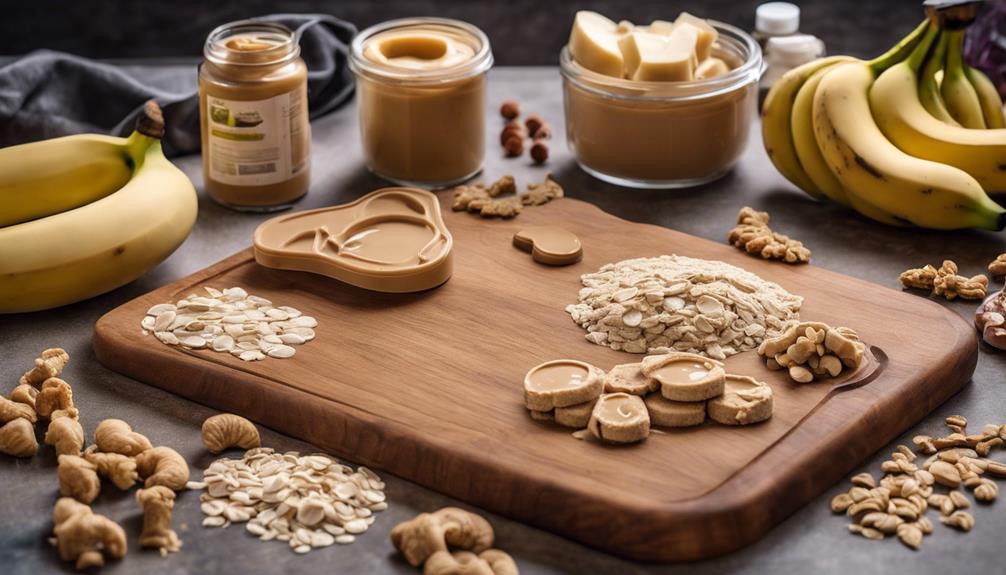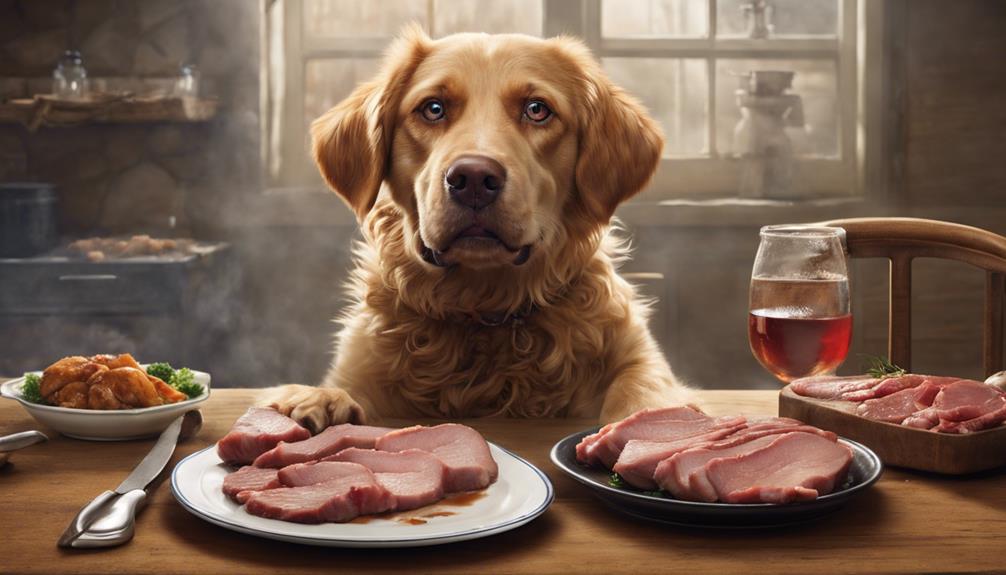When working with a 5-month-old puppy, it’s best to choose a crate with enough space for them to stand, turn, and lie down comfortably. Don’t forget to use a divider to adjust the space as your puppy grows. Put the crate in a quiet area for a peaceful environment, making sure there is proper airflow for temperature control. Adding bedding and familiar toys can turn the crate into a comfortable retreat for your puppy.
For more details on effective crate training schedules, discover valuable insights that can help your puppy adjust and thrive in their crate routine.
Key Takeaways
- Gradually increase crate time daily by 30 minutes to 1 hour.
- Use high-value treats for positive reinforcement during crate training.
- Provide engaging toys for entertainment and mental stimulation in the crate.
- Maintain a consistent feeding routine inside the crate for positive associations.
- Position the crate in a quiet, low-traffic area for a secure and calming environment.
Crate Selection and Preparation
When selecting a crate for your 5-month-old puppy, ensure it allows them to stand up, turn around, and lie down comfortably. The crate shouldn't be too large as this might cause the puppy to designate one side as a bathroom area. It's recommended to use a divider within the crate, adjusting the space as the puppy grows. This helps in housetraining by making the crate space just big enough for the puppy to stand, turn, and lie down, discouraging them from soiling the crate.
Placing the crate in a quiet area of the house helps minimize distractions, creating a calm environment for the puppy to relax. Proper airflow is vital for maintaining a comfortable temperature within the crate. Adding bedding and familiar toys can make the crate a cozy den that the puppy will enjoy spending time in.
Creating a positive association with the crate from the start is essential for successful crate training.
Placing the Crate Strategically
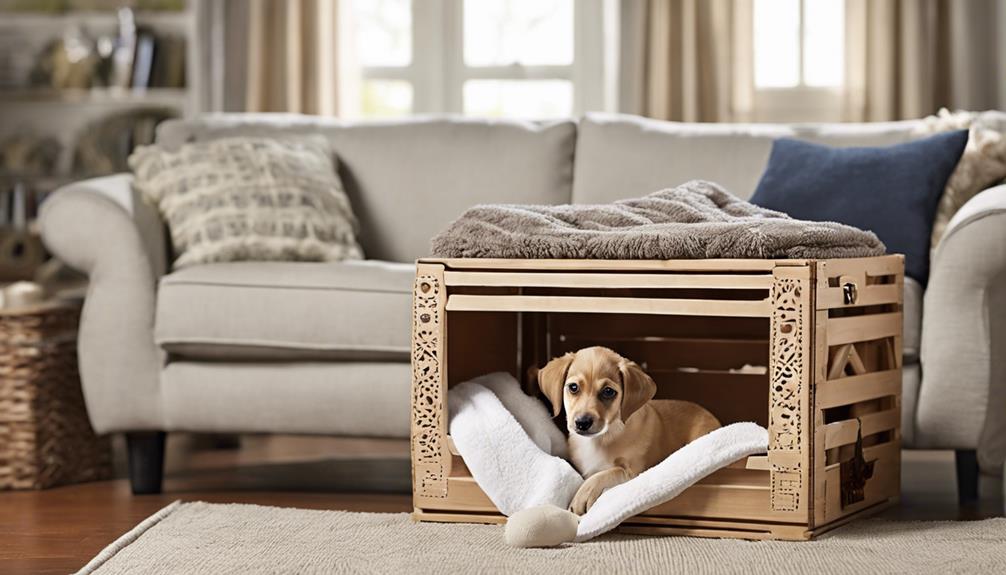
Strategically position the crate in a quiet, low-traffic area of the house to provide a secure and peaceful retreat for your 5-month-old puppy.
Placing the crate in a serene location helps minimize distractions, allowing the puppy to focus on crate training without external disruptions. Avoid high traffic areas to prevent overstimulation and anxiety, ensuring the puppy feels secure in its environment.
It's beneficial to position the crate near the family living space, creating a sense of connection and reducing feelings of isolation during crate time. Good ventilation around the crate is essential to maintain a comfortable environment with fresh airflow.
Feeding Routine Inside the Crate
To continue acclimating your 5-month-old puppy to the crate, incorporate its feeding routine inside the crate for positive reinforcement and consistency. Here's how you can make mealtime a structured activity in the crate:
- Create Positive Associations: Feed your puppy inside the crate to associate it with positive experiences.
- Establish Consistency: Use the same feeding routine in the crate to provide a sense of familiarity and security for your puppy.
- Food Bowl Placement: Position the food bowl at the back of the crate to encourage your puppy to enter willingly.
- Encourage Calmness: Make sure your puppy remains calm and relaxed during feeding time in the crate by using a soothing tone and gentle gestures.
Gradual Increase in Crate Time
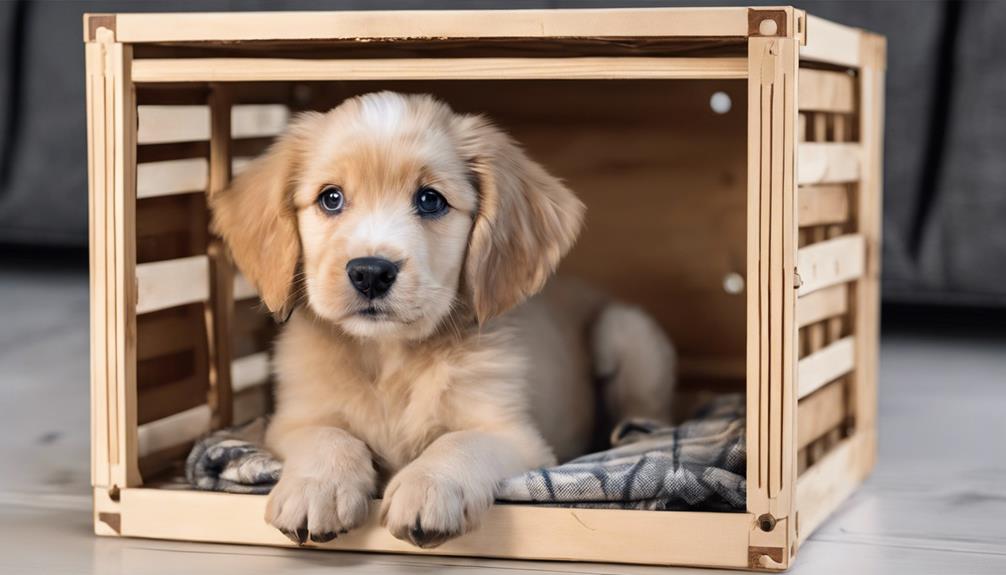
Gradually extending the time your 5-month-old puppy spends in the crate each day is essential for successful crate training. At this age, a puppy can typically handle being in the crate for about 4-5 hours. To gradually increase crate time, add 30 minutes to an hour each day, ensuring the puppy adjusts comfortably.
It's vital to monitor your puppy's behavior and comfort level during these extensions. Providing engaging toys or puzzles can keep the puppy entertained while in the crate for longer periods, making the experience more enjoyable. Remember to schedule regular potty breaks and playtime outside the crate to maintain a healthy routine.
Using Treats and Toys for Encouragement
Using high-value treats and interactive toys is an effective way to encourage your puppy to enter the crate willingly during training. When incorporating treats and toys into crate training, consider the following:
- High-Value Treats: Use small pieces of cooked chicken or freeze-dried liver to reward the puppy for entering the crate voluntarily.
- Interactive Toys: Utilize toys like Kong toys filled with treats to keep the puppy engaged and entertained while inside the crate.
- Variety is Key: Rotate different types of treats and toys to maintain your puppy's interest and motivation for crate training.
- Safety First: Make sure that the treats and toys used in the crate are safe and suitable for your puppy's age and size to prevent any choking hazards.
Ensuring Comfort in Alone Time

When guaranteeing comfort in alone time for your puppy, it's crucial to provide a cozy crate setup with soft bedding and engaging toys.
Including familiar scents like lavender or chamomile can help create a soothing environment, while playing relaxing background music can further enhance the relaxation experience for your puppy.
These simple yet effective strategies can make a significant difference in helping your puppy feel secure and comfortable during crate training sessions.
Cozy Crate Setup
For optimal comfort during alone time, consider placing a snug bed or blanket inside the crate for your 5-month-old puppy.
Here are some tips to set up a cozy crate for your furry friend:
- Cozy Bed or Blanket: Provide a soft and comfortable surface for your puppy to rest on.
- Quiet Area: Position the crate in a peaceful spot to create a calm environment.
- Favorite Toy: Include a beloved toy or chew to keep your puppy entertained and mentally stimulated.
- Fresh Water: Guarantee access to water to keep your puppy hydrated and content.
Familiar Scents Inside
To enhance your 5-month-old puppy's comfort during alone time, consider infusing the crate with familiar scents to create a soothing environment. Introducing familiar scents inside the crate can help your puppy feel more secure and at ease. Placing an item with your scent, such as a piece of clothing, in the crate can provide reassurance and reduce separation anxiety.
These familiar scents act as a calming factor, especially when your puppy is adjusting to spending time alone in the crate. Your scent serves as a comforting presence, making the crate a welcoming and safe space for your puppy. By incorporating familiar scents, you can help create a positive association with the crate, promoting a sense of security and reassurance for your furry companion.
Relaxing Background Music
Infusing the crate with relaxing background music can aid in soothing and calming a 5-month-old puppy during alone time, promoting a peaceful environment and reducing stress and anxiety.
When considering this method, remember these key points:
- Classical music or nature sounds are recommended for creating a relaxing atmosphere.
- Music can mask outside noises, providing a sense of security for the puppy.
- Consistent use of background music during crate time helps the puppy associate the crate with relaxation and comfort.
- Soft music creates a tranquil space, aiding in the puppy's overall well-being and adjustment to crate training.
Frequently Asked Questions
How Often Should I Crate My 5 Month Old Puppy?
We crate our 5-month-old puppy every 3-4 hours during the day. Gradually increase crate time to 5 hours. Include interactive toys for entertainment. Consistent schedule reinforces positive behavior and routine, preventing stress or accidents.
Is 5 Months Too Late to Crate Train a Puppy?
Not too late at 5 months, crate training can still be successful with patience and consistency. Addressing preferences or fears may take more time but can establish a positive crate association. Older puppies can learn too.
What Is a Good Schedule for a 5 Month Old Puppy?
For a 5-month-old puppy, a good schedule involves regular potty breaks, consistent feeding times, engaging play/training sessions, and ample exercise to prevent restlessness. We guarantee bladder control by planning 3-4 breaks and maintaining routine.
How Long Can a 5 Month Old Be in a Crate?
We guarantee a 5-month-old puppy can be in a crate for around 5 to 6 hours during the day. Gradually increase crate time and monitor behavior for successful training. Mental stimulation and comfort items help the puppy feel secure.
How Can I Modify the 8-Week Old Puppy Crate Training Schedule for a 5-Month-Old Puppy?
When transitioning from an 8weekold puppy crate training schedule to a 5-month-old puppy, gradually increase the time the puppy spends in the crate. Start with short periods and slowly add more time. Remember to take the puppy out for frequent bathroom breaks and provide plenty of toys and comfort items inside the crate.
Conclusion
To sum up, crate training your 5-month-old puppy can be a rewarding experience for both you and your furry friend.
By following a carefully planned schedule and using positive reinforcement techniques, you can help your puppy feel safe and secure in their crate.
Remember, consistency is key, and with patience and dedication, your puppy will soon see their crate as a cozy retreat.
Keep up the good work, and soon your puppy will be crate trained like a pro!
